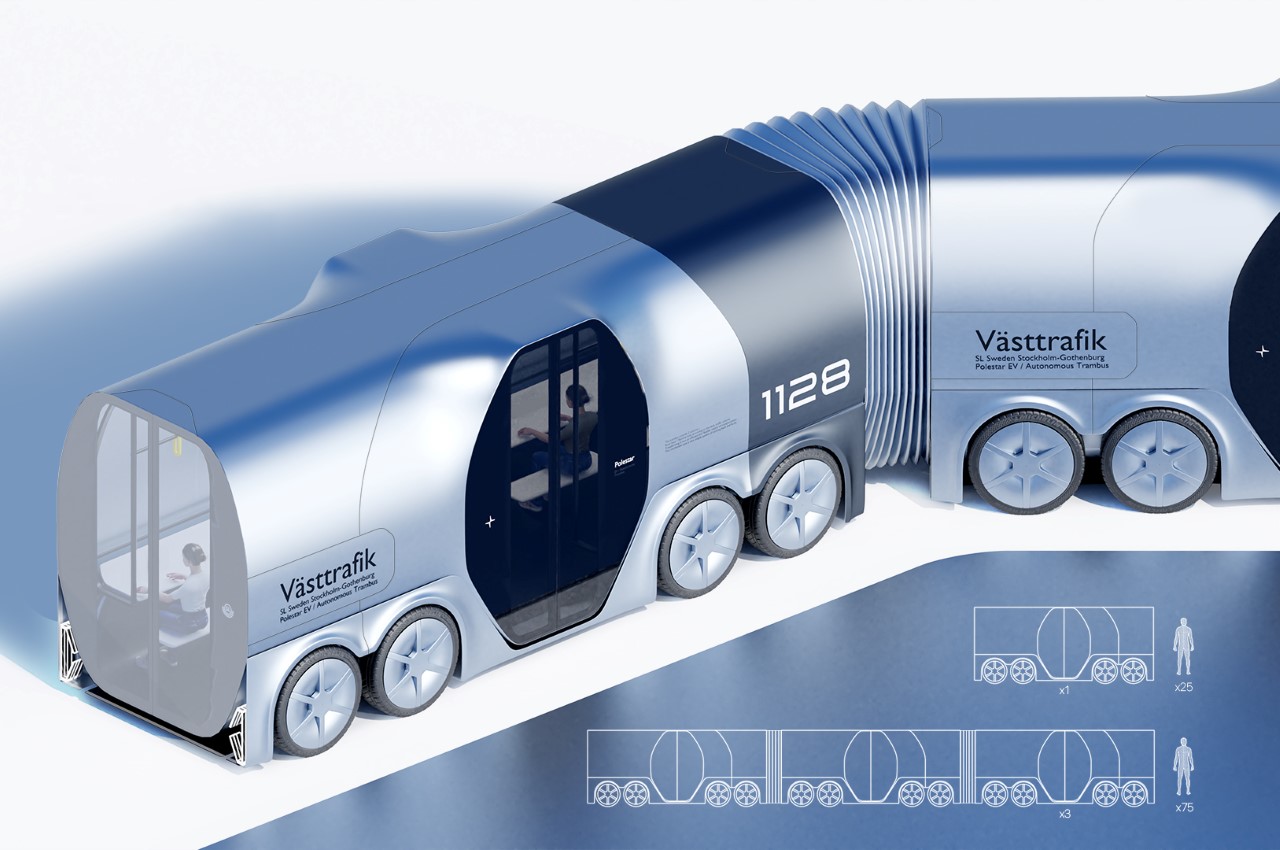
Just like a train adds extra carriages when it’s running on high-capacity, the Polestar Trambus can expand in length to allow more passengers during an exceptionally busy day.
The idea for the Trambus comes from Seoul-based transportation design student Junghyun Kim, who developed the design as an entry into the 2021 Polestar Design Contest. Instead of putting more buses on the road during rush hour, Kim envisioned a modular bus system that could just allow you to expand a single existing bus by joining more buses to it, creating a road-rail hybrid that allowed you to transport people in an organized manner.
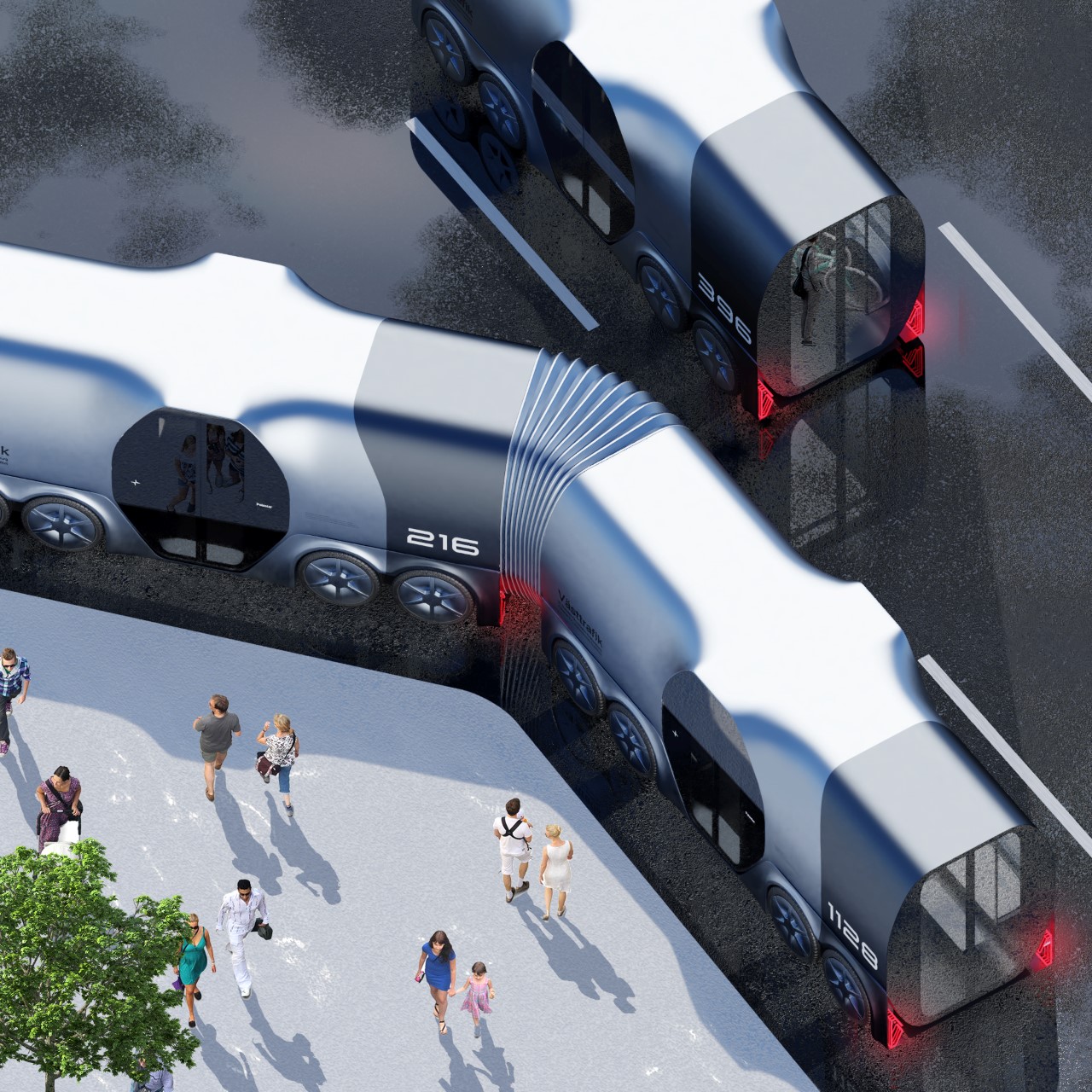
The buses operate autonomously, which makes them perfect for creating a modular system. The Trambus operates either as independent buses that house 25 passengers or as an interconnected set of 2 or 3 buses with a capacity of 50 or 75 passengers respectively. Each module is connected to another using a flexible bellow-shaped channel – quite like the one found on trains, although it’s unclear if passengers can move between carriages. The carriages are designed to be different on the insides too, with seated layouts for regular customers, table-layouts for long commutes or first-class customers, and empty carriages for people on wheelchairs or commuters with bicycles.
Designer: Junghyun Kim
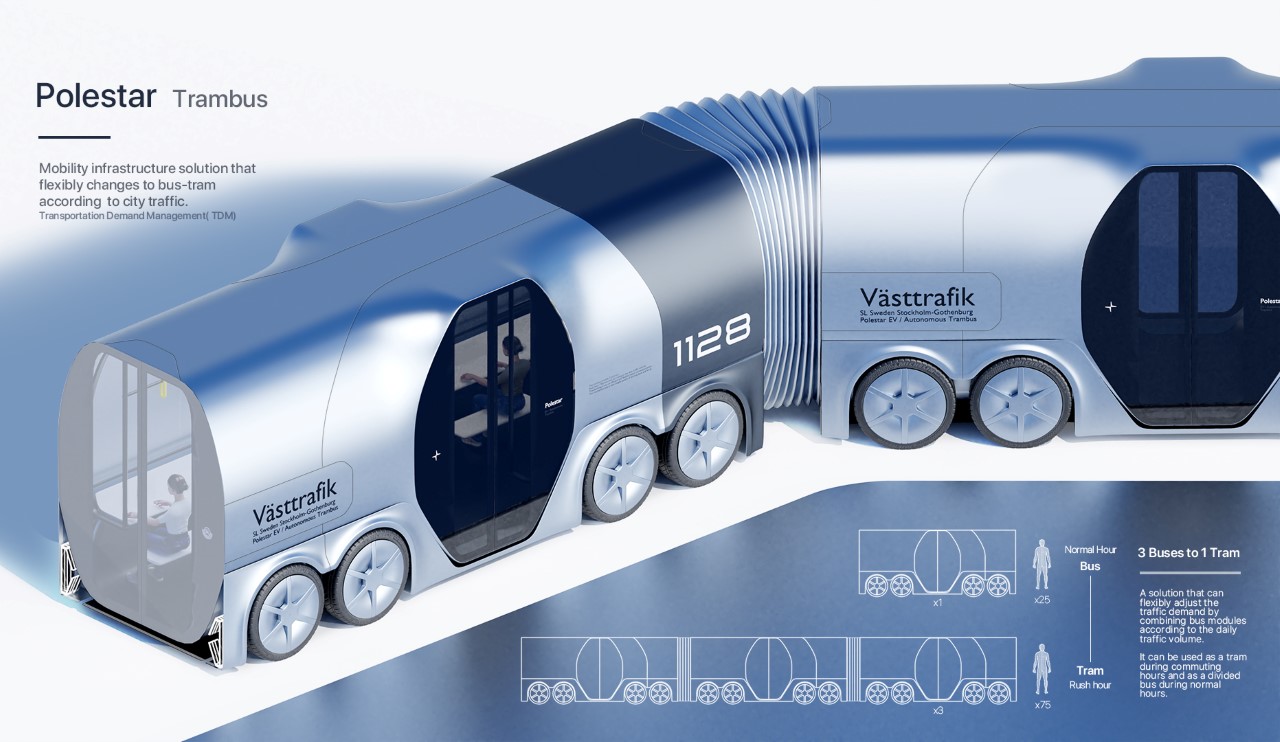
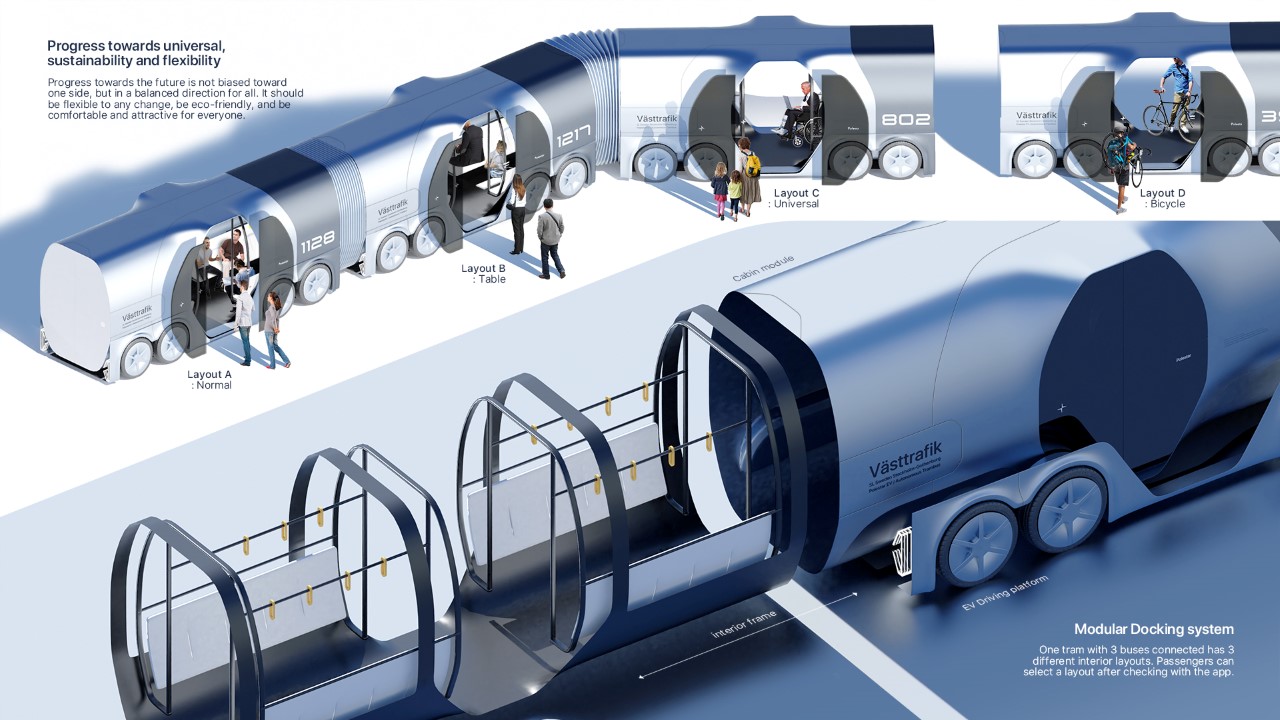
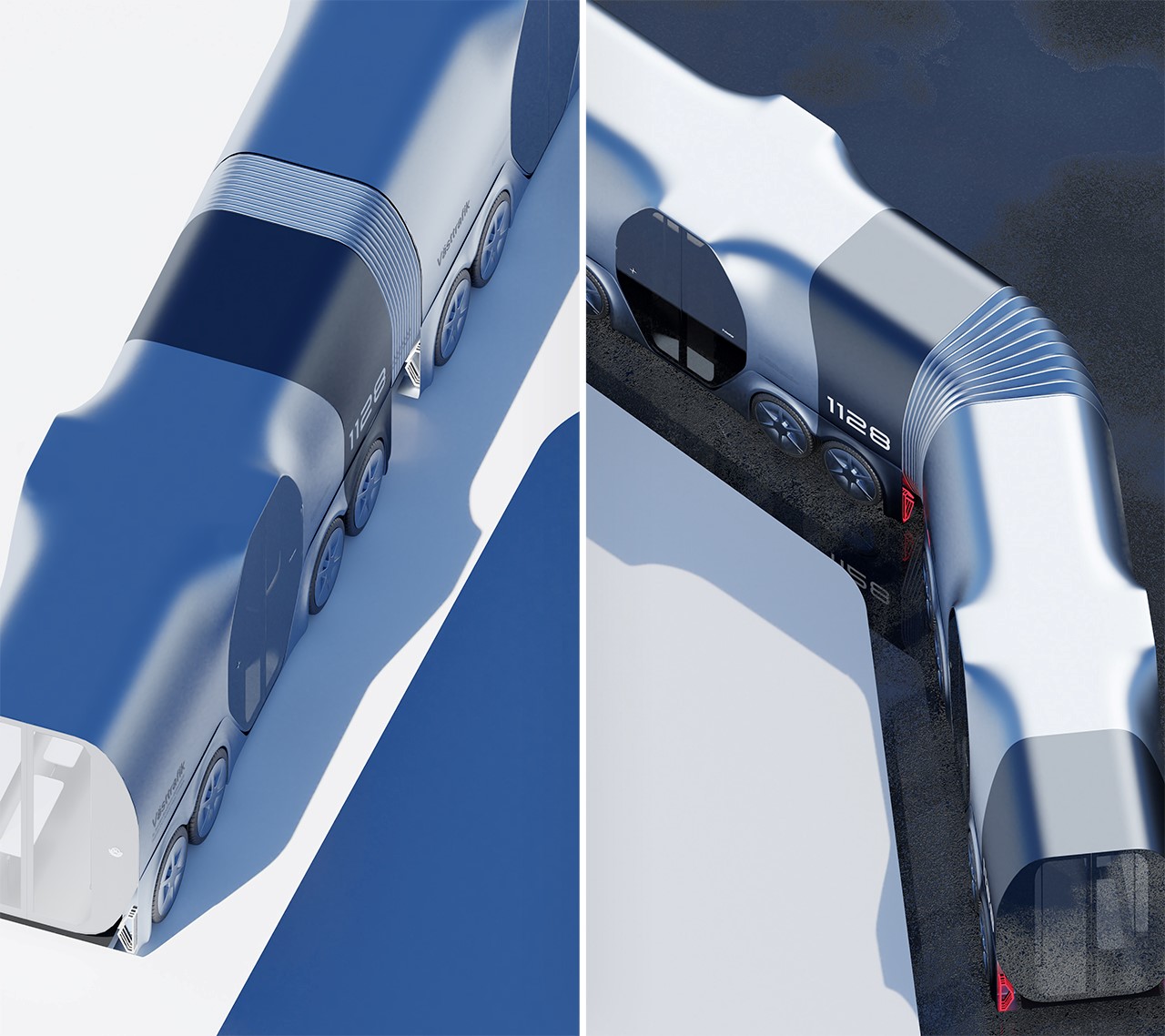
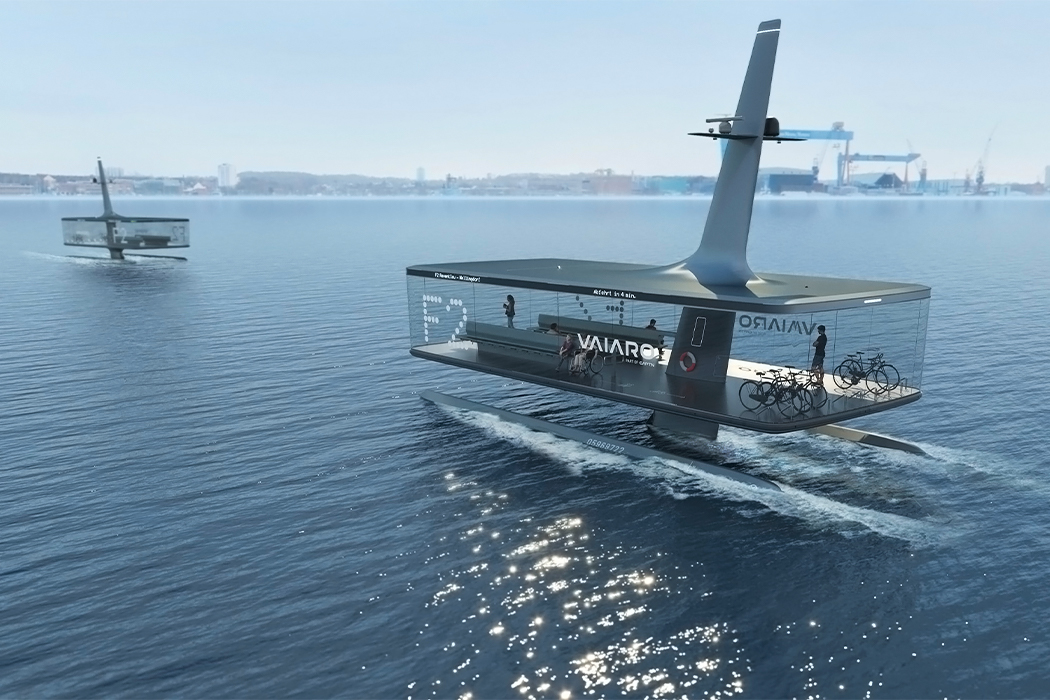
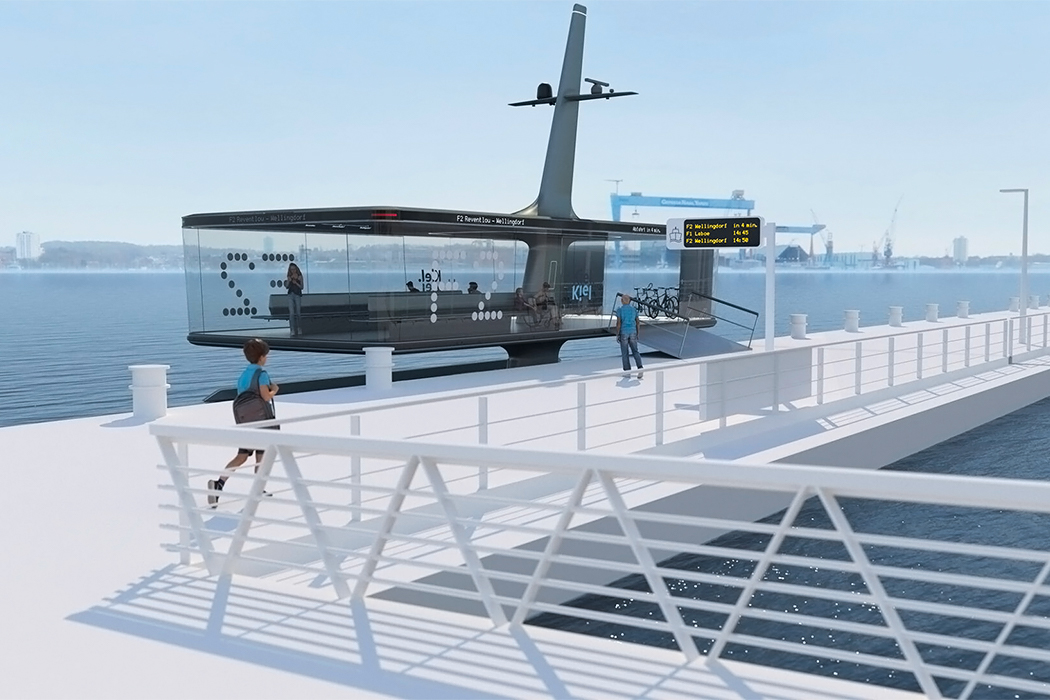
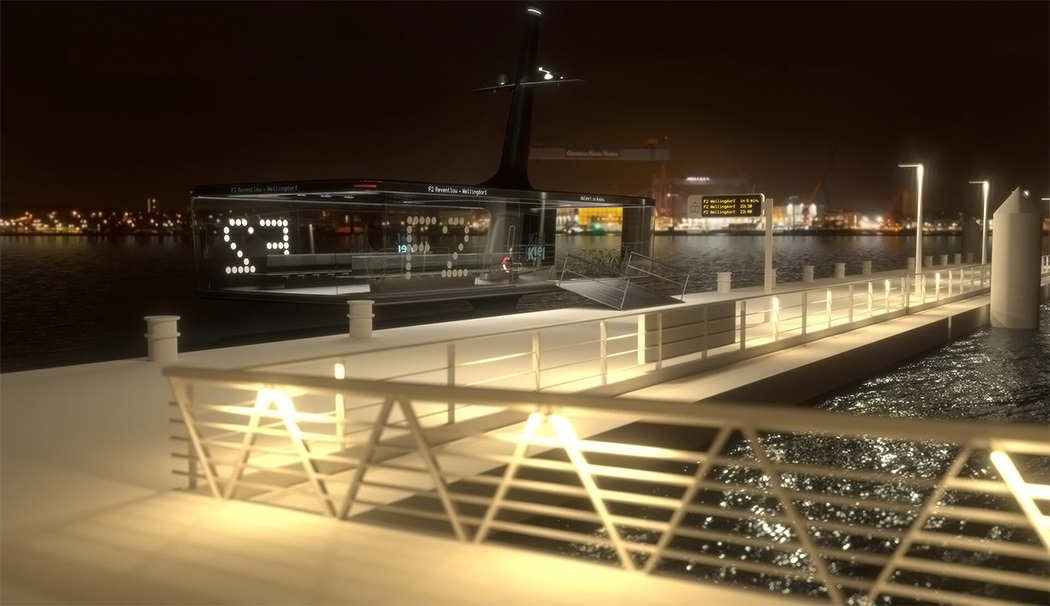
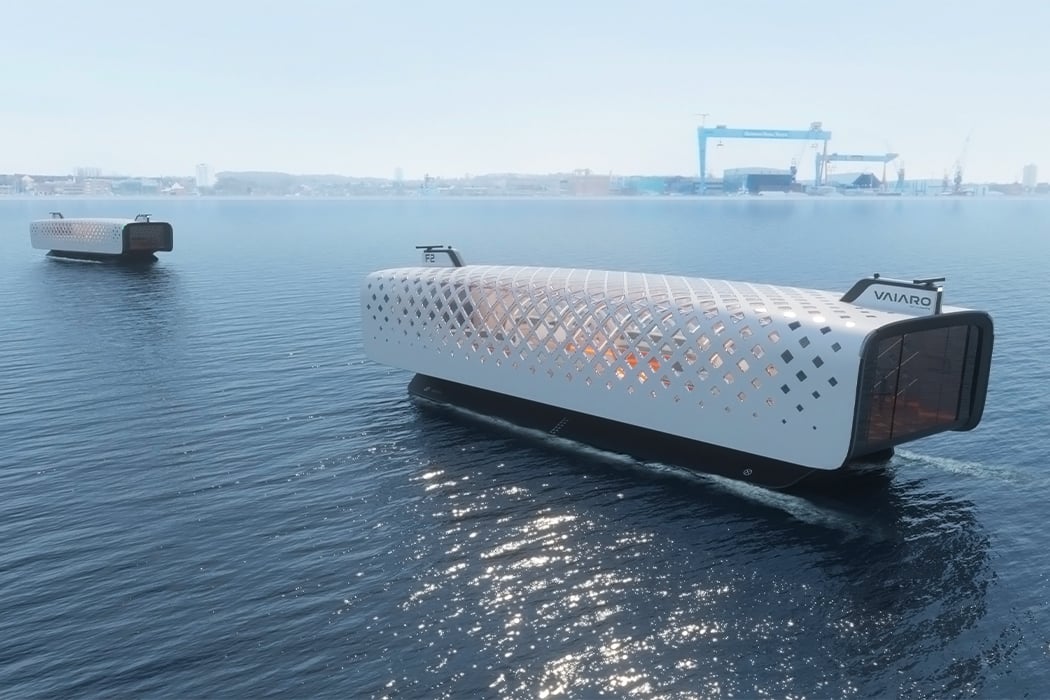
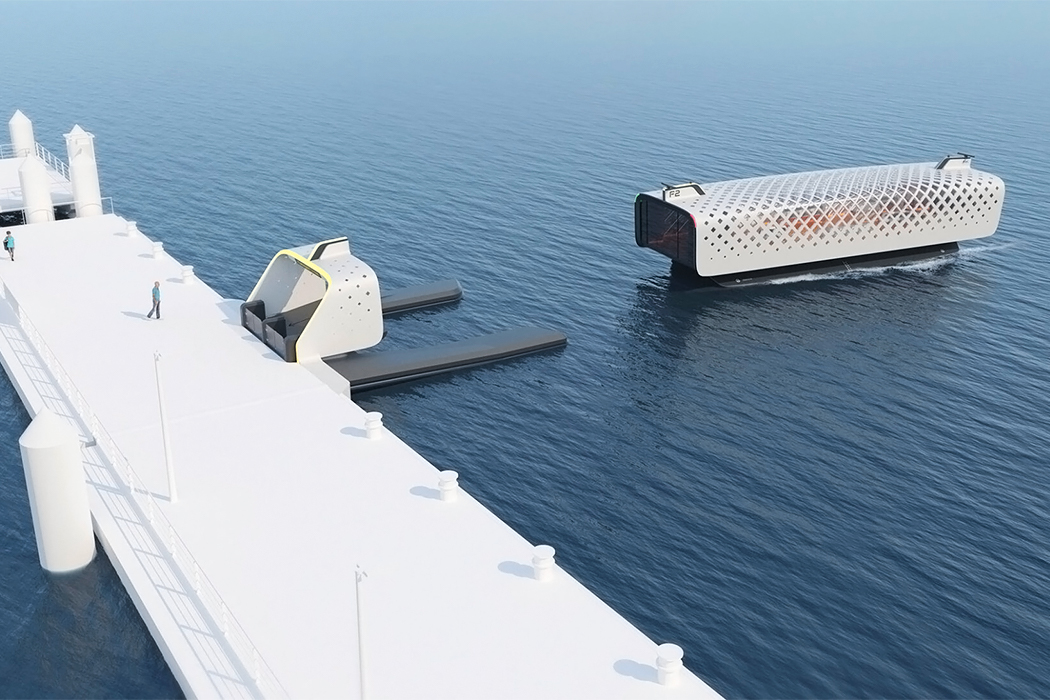
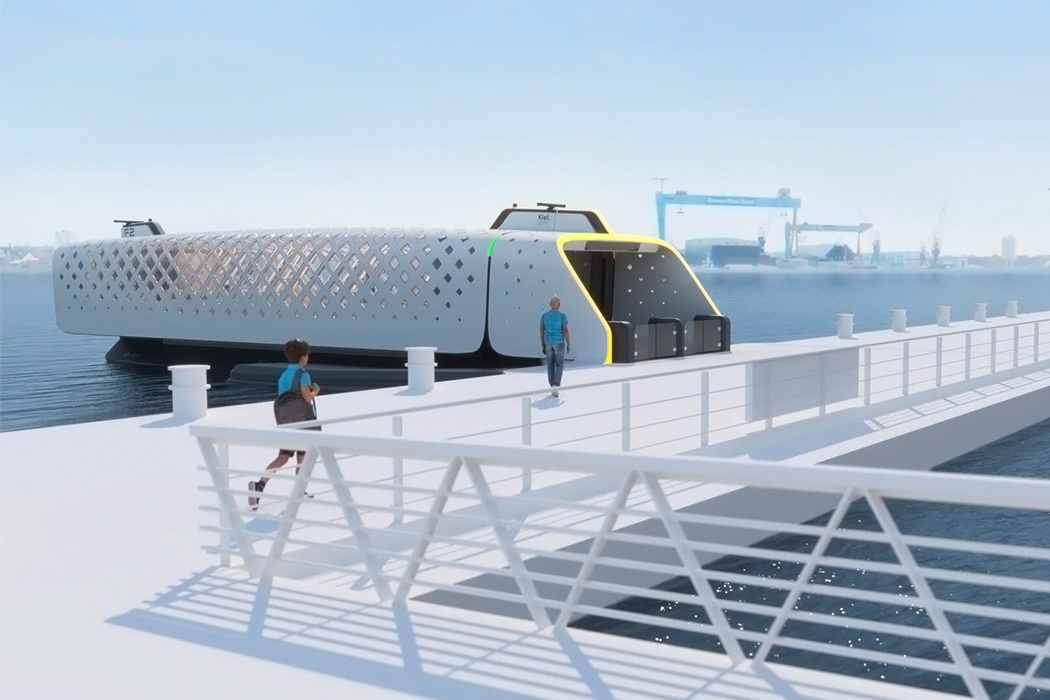
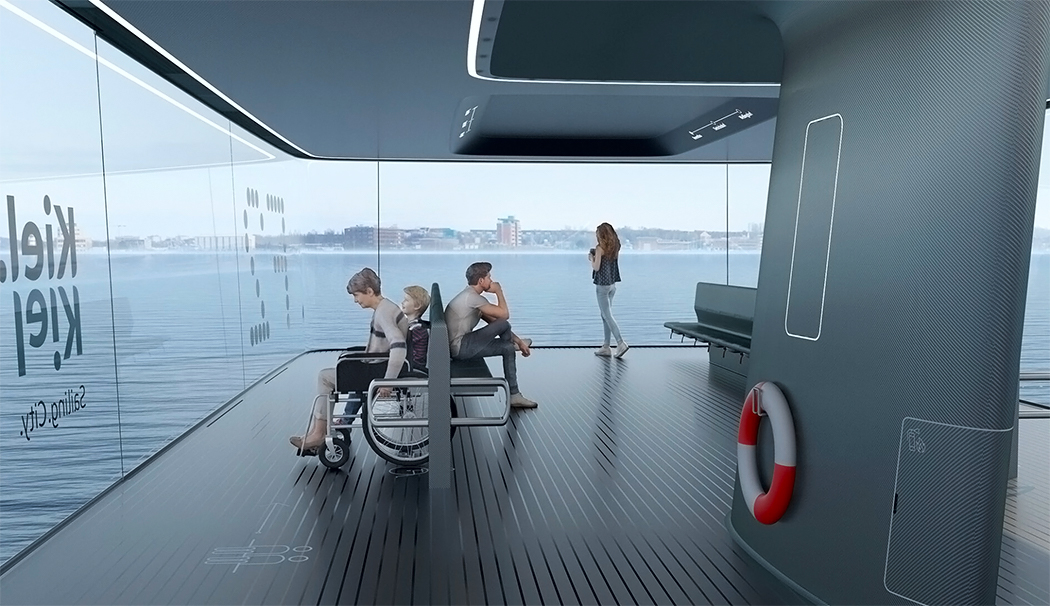
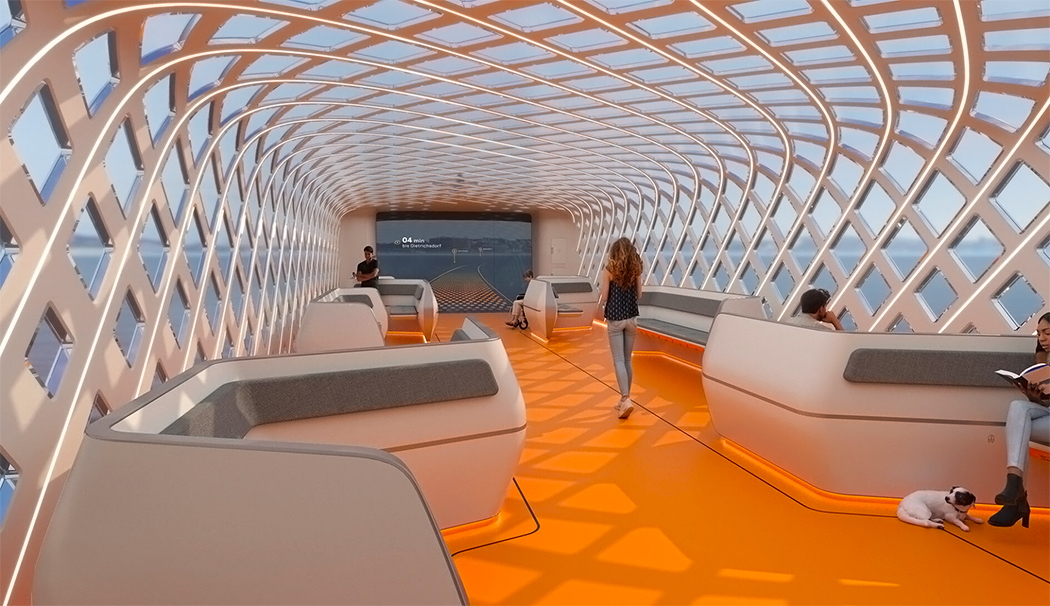
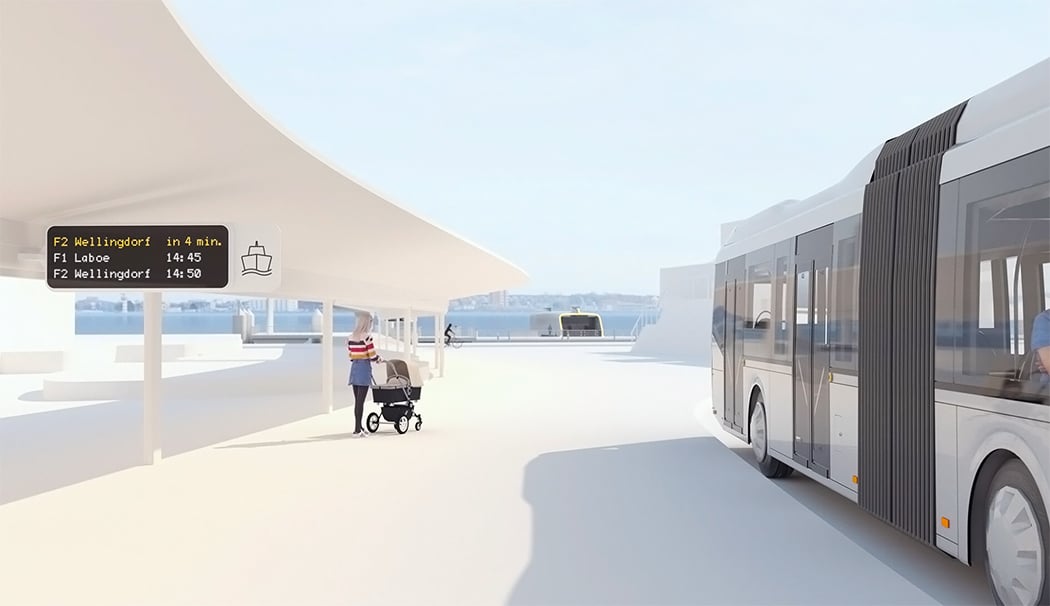
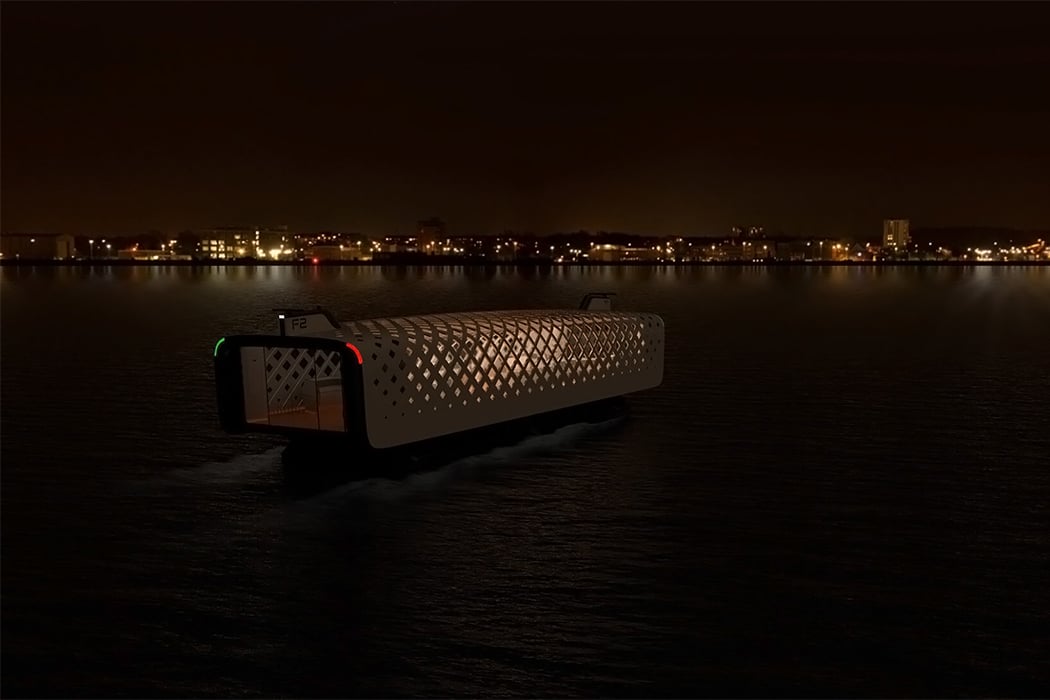
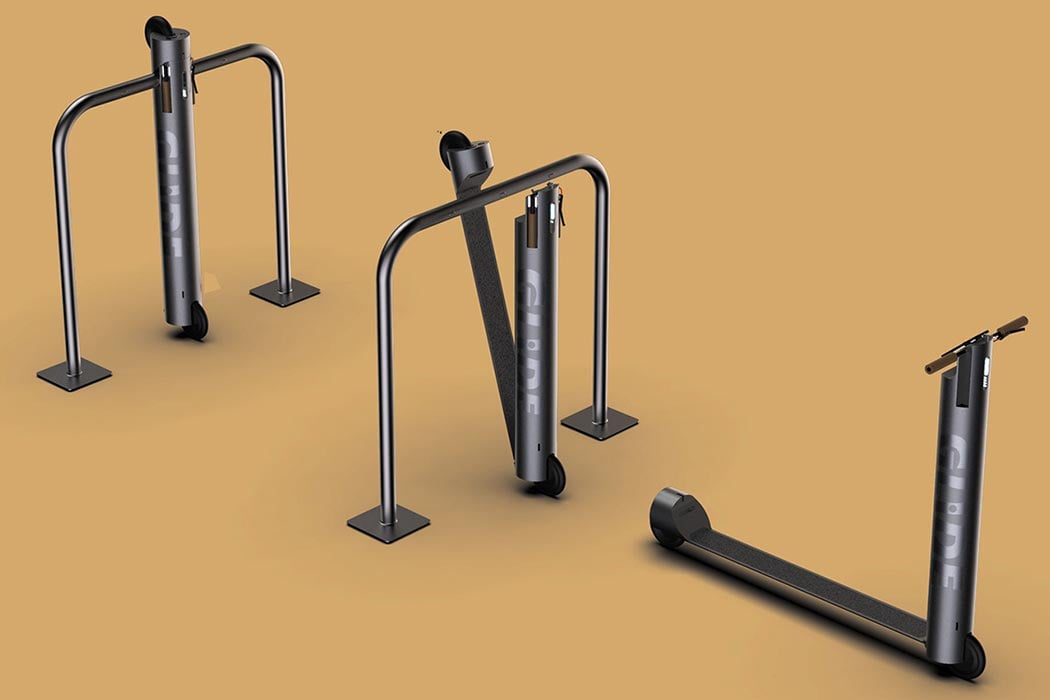
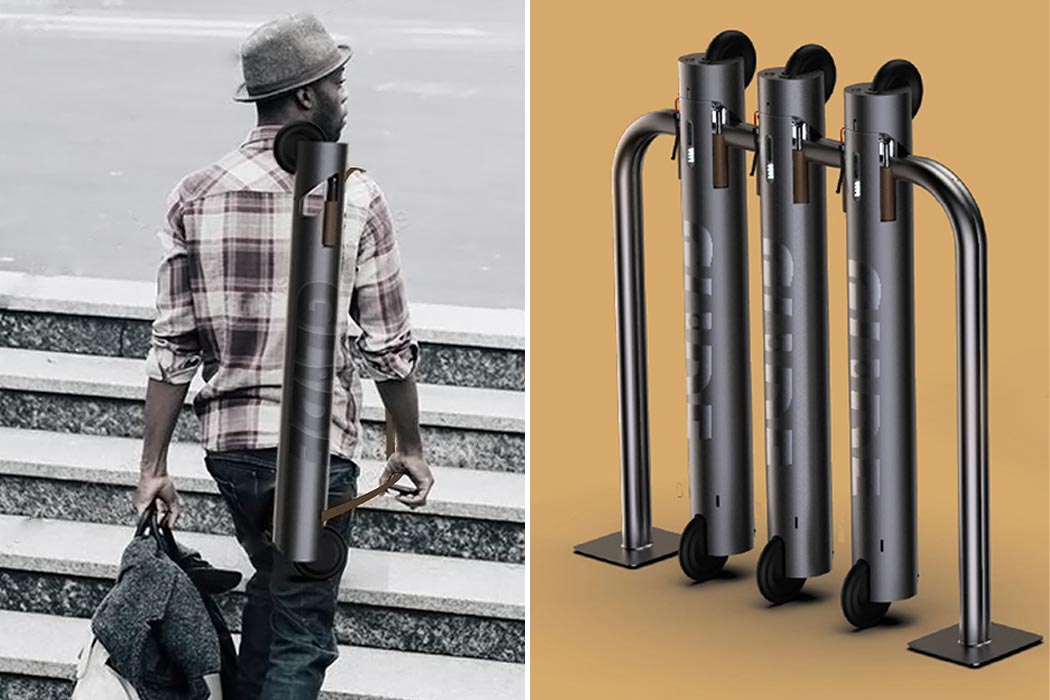
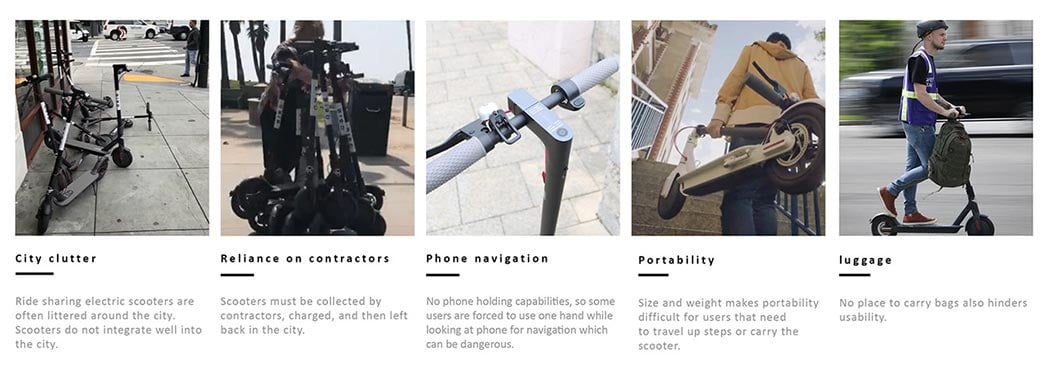
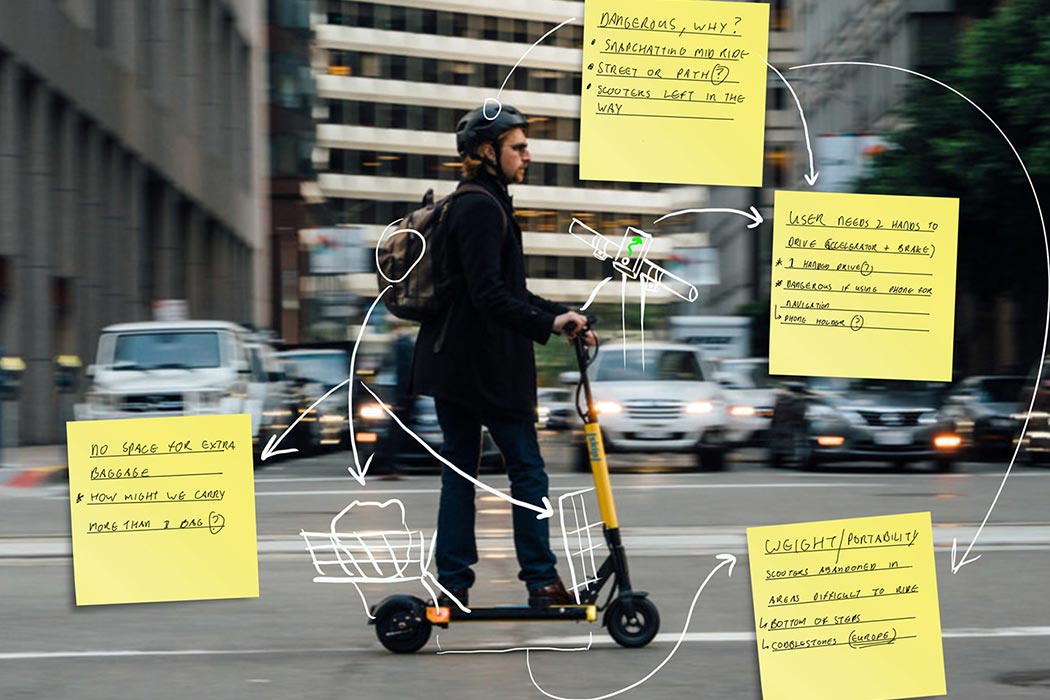
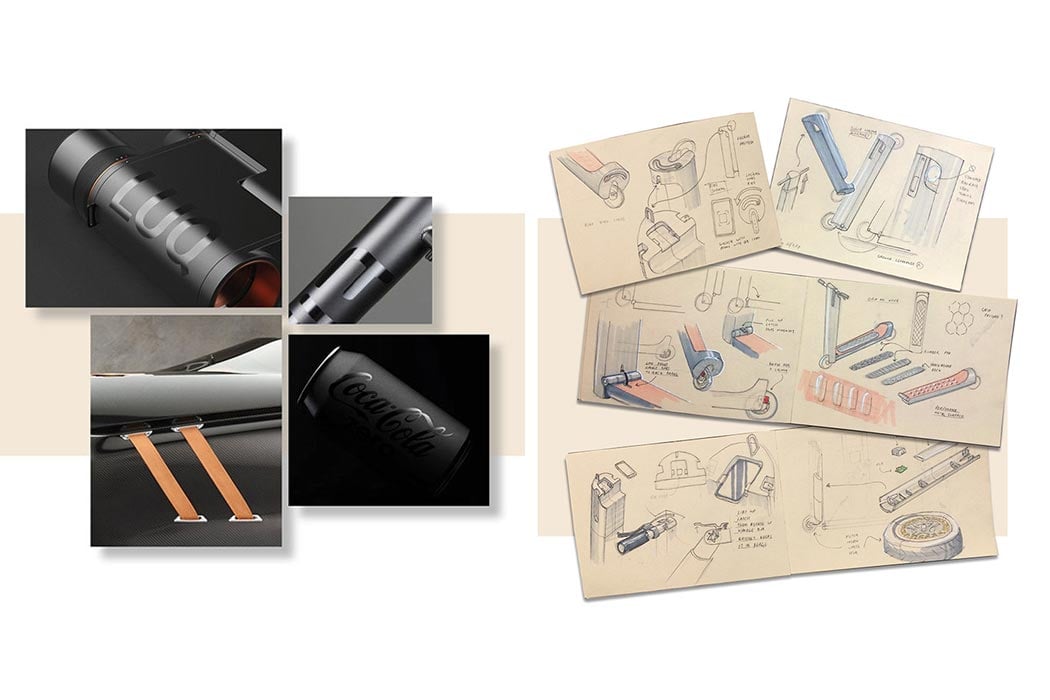
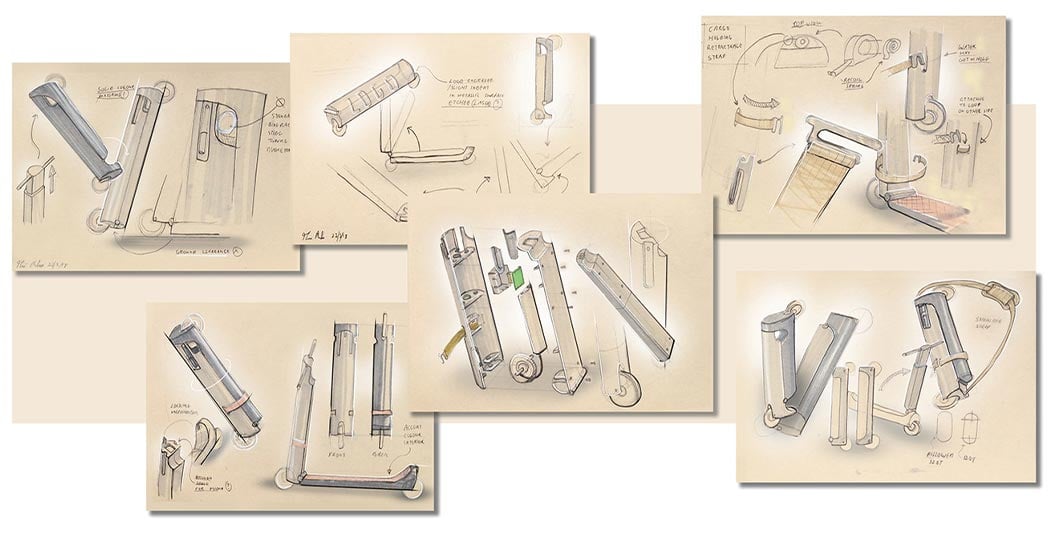
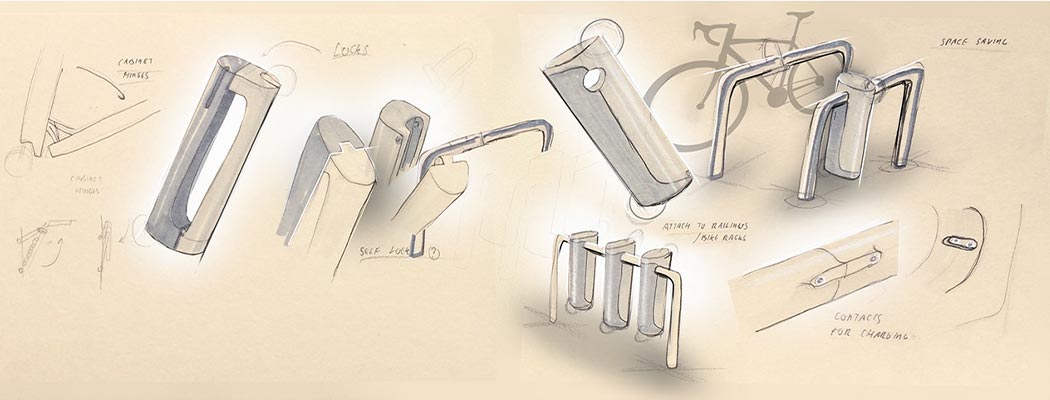
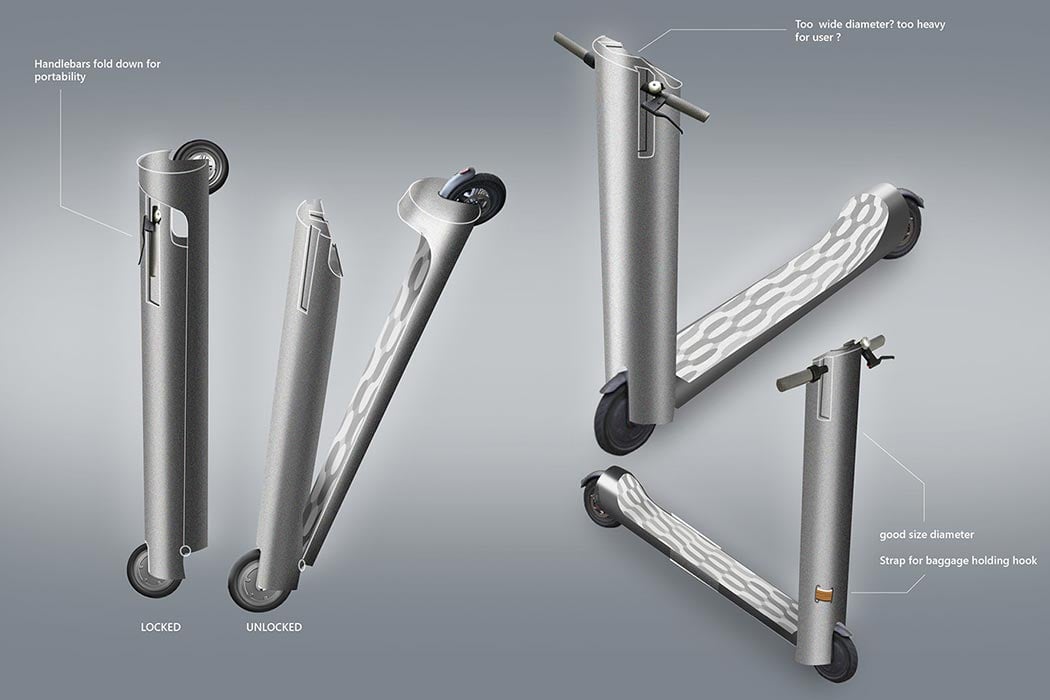
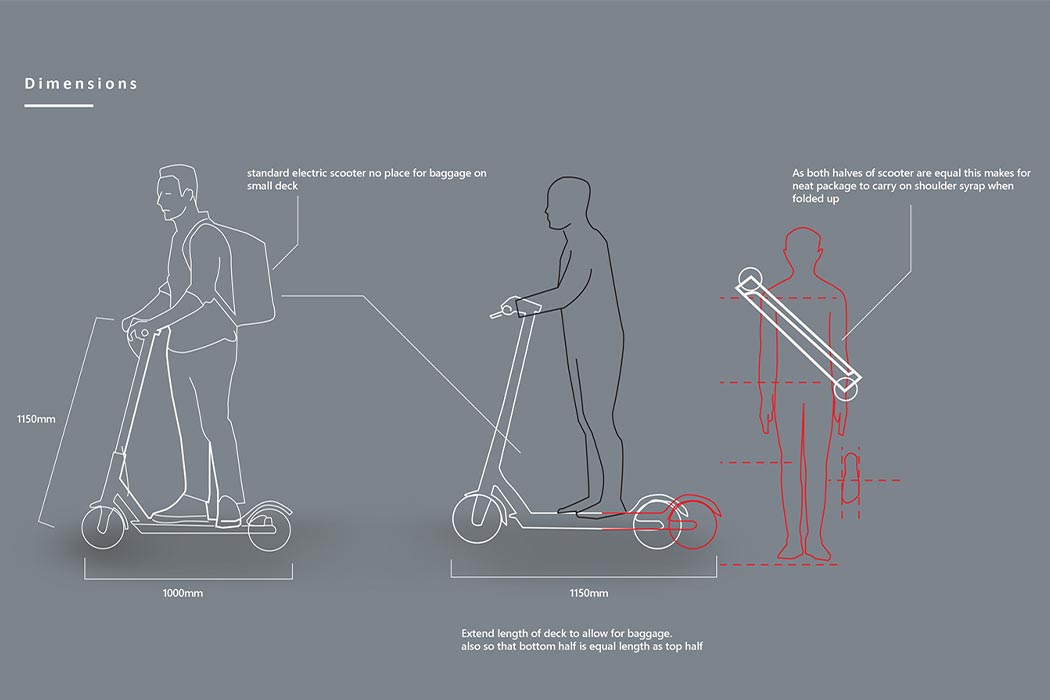
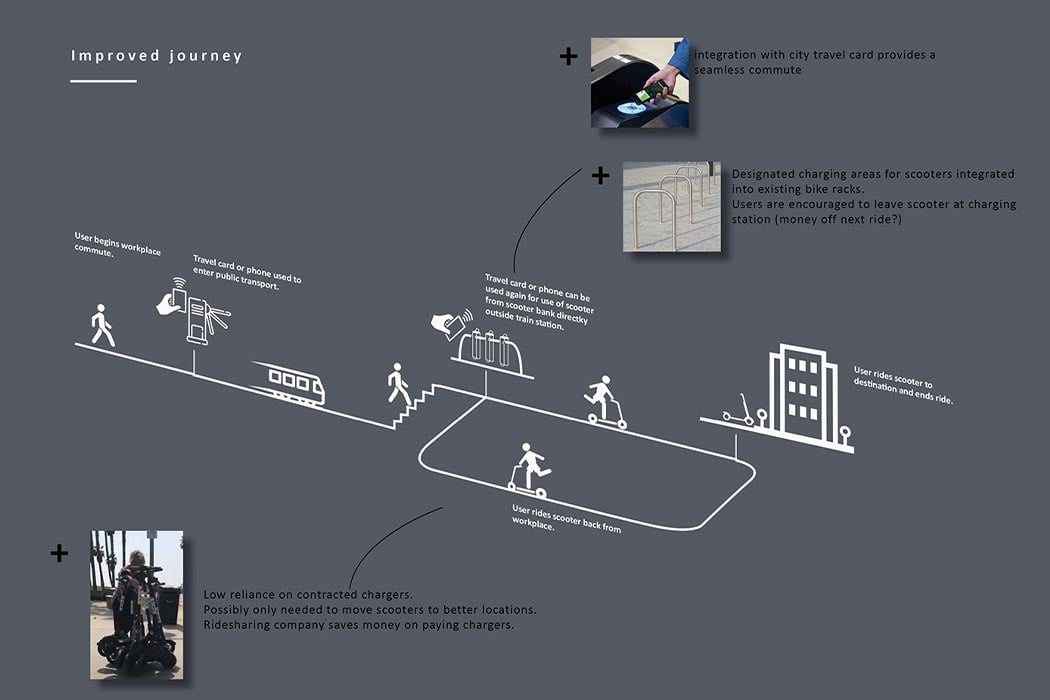
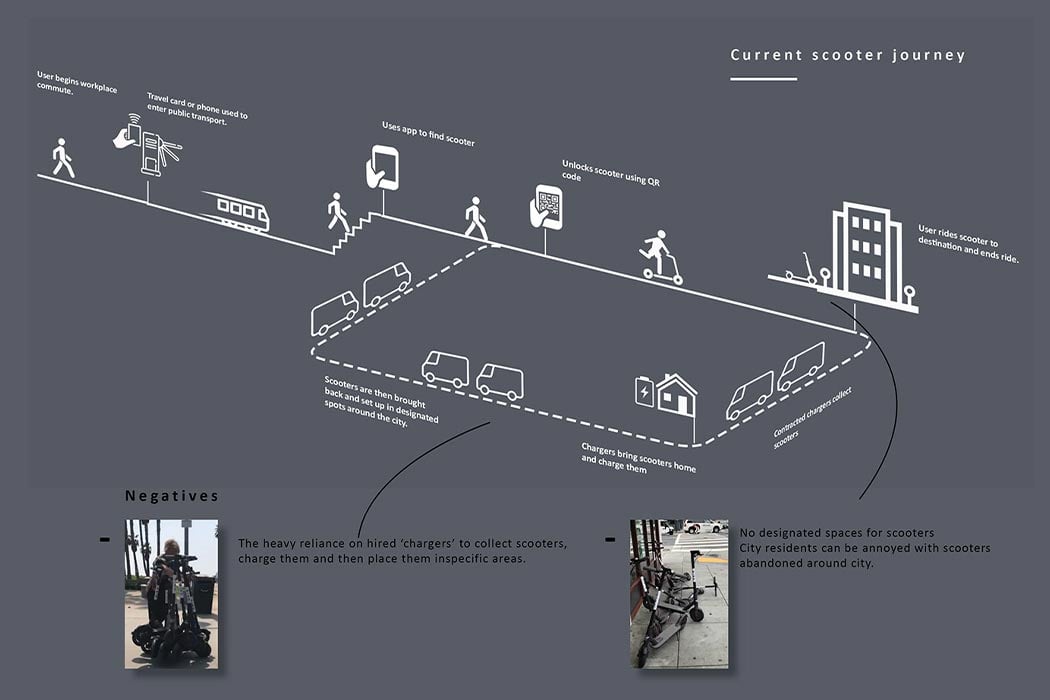
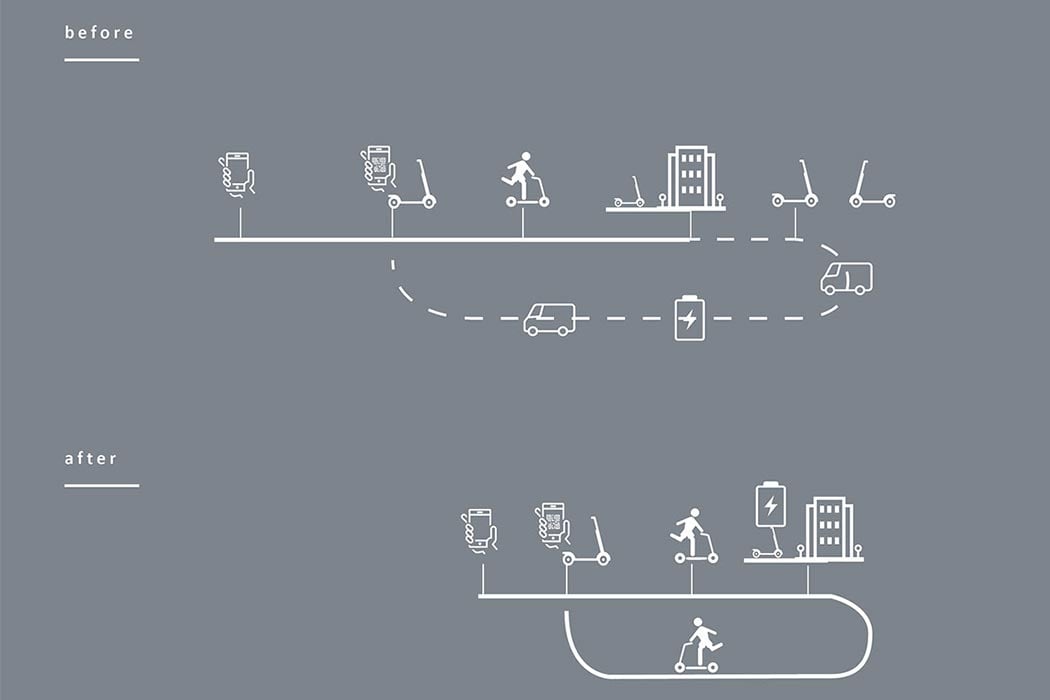
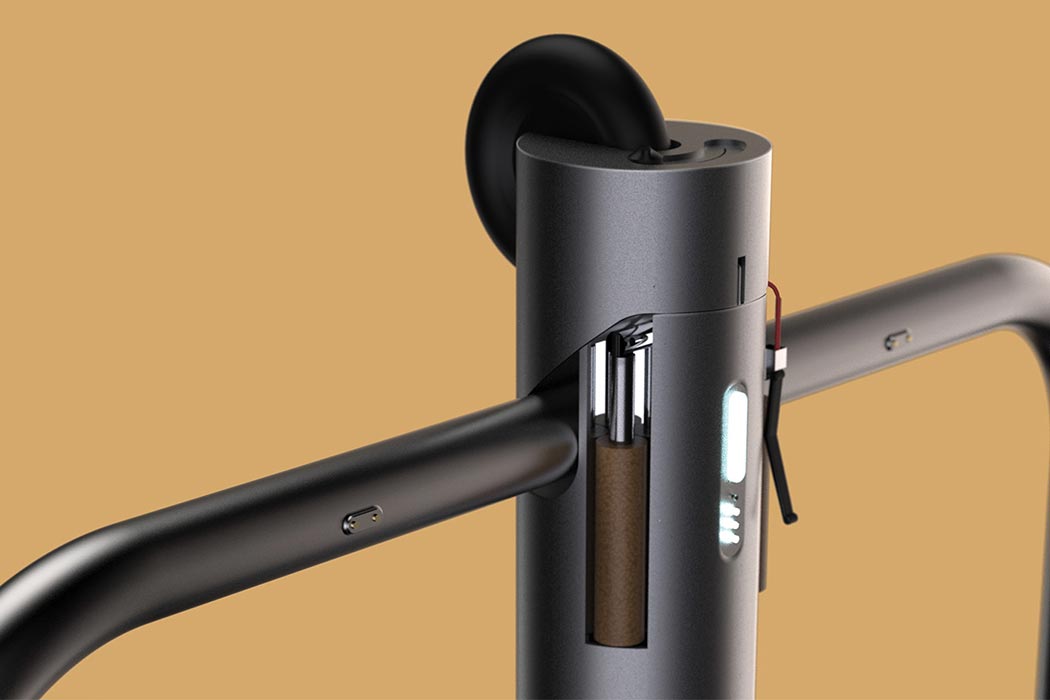
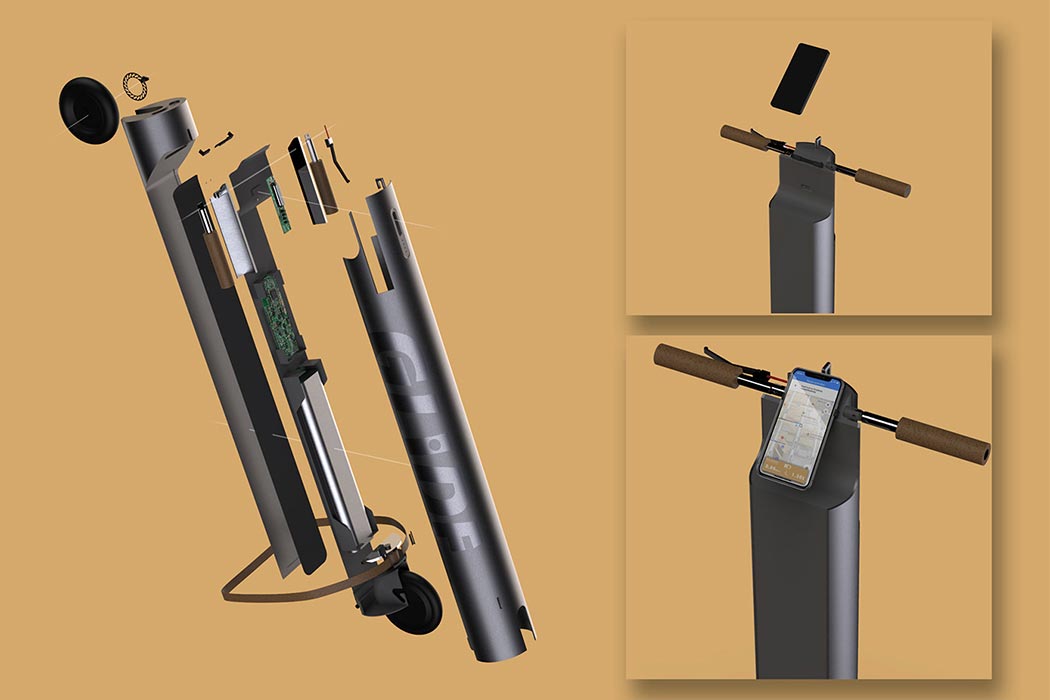
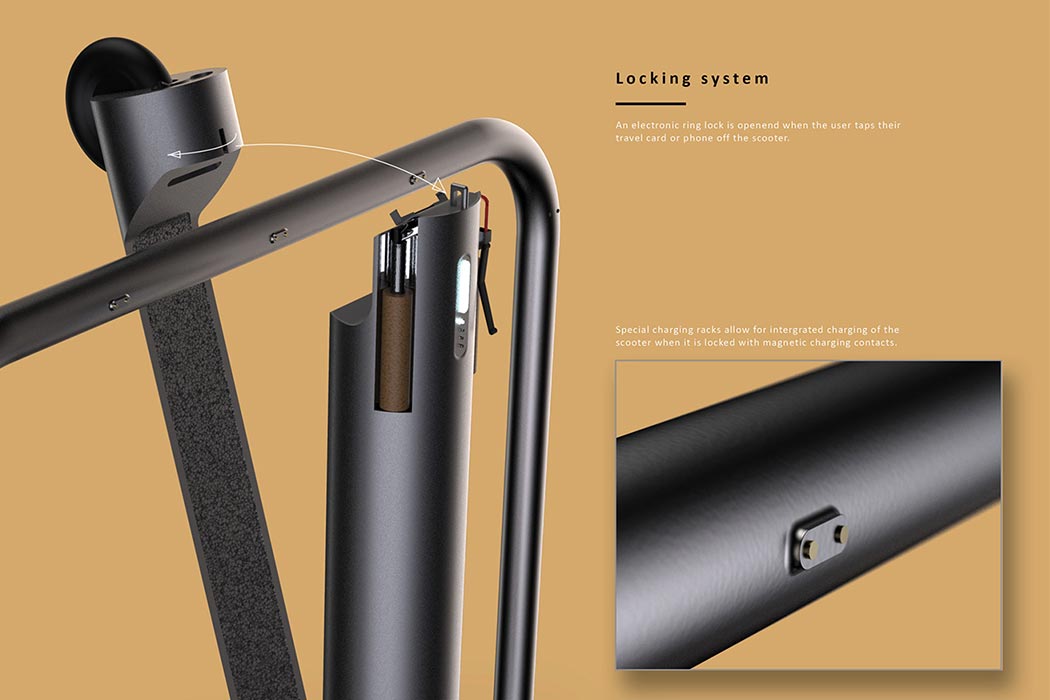
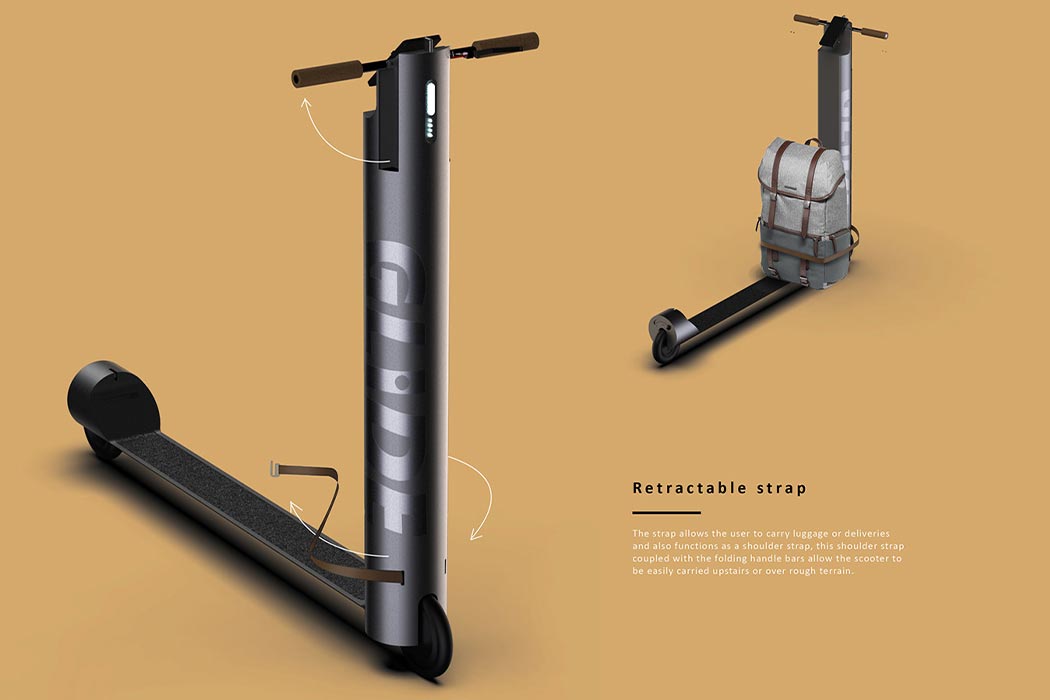
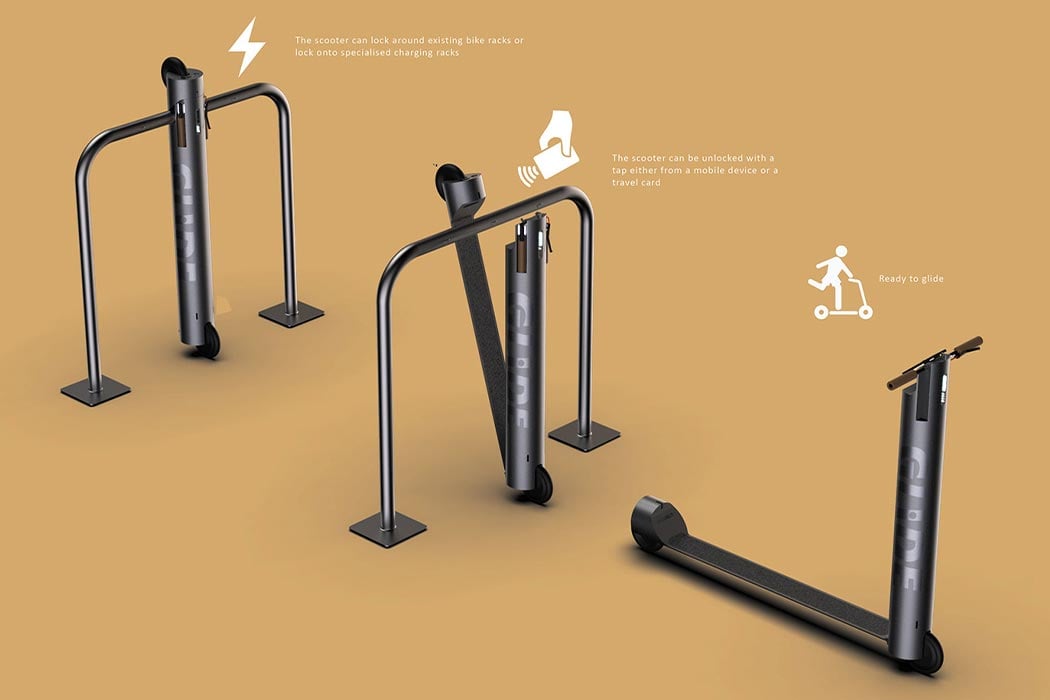
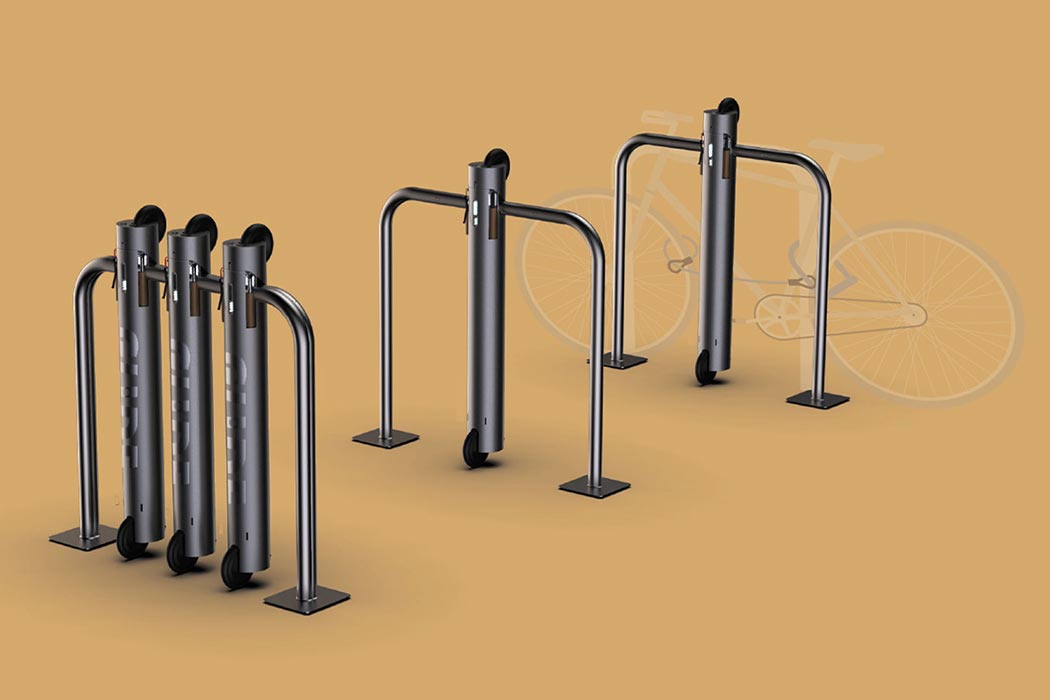
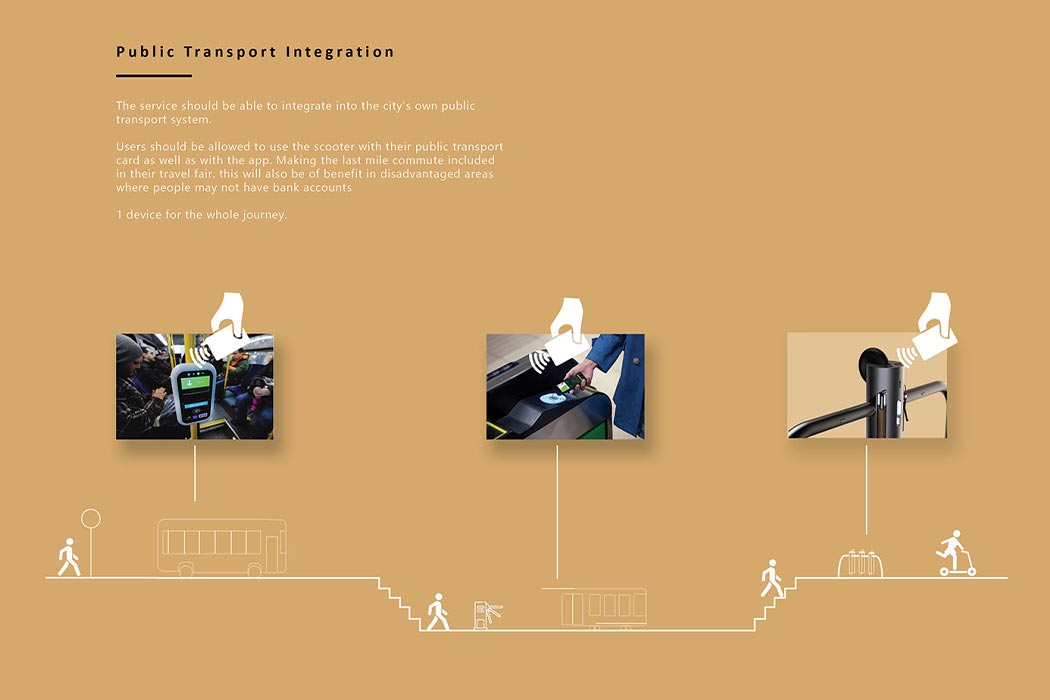
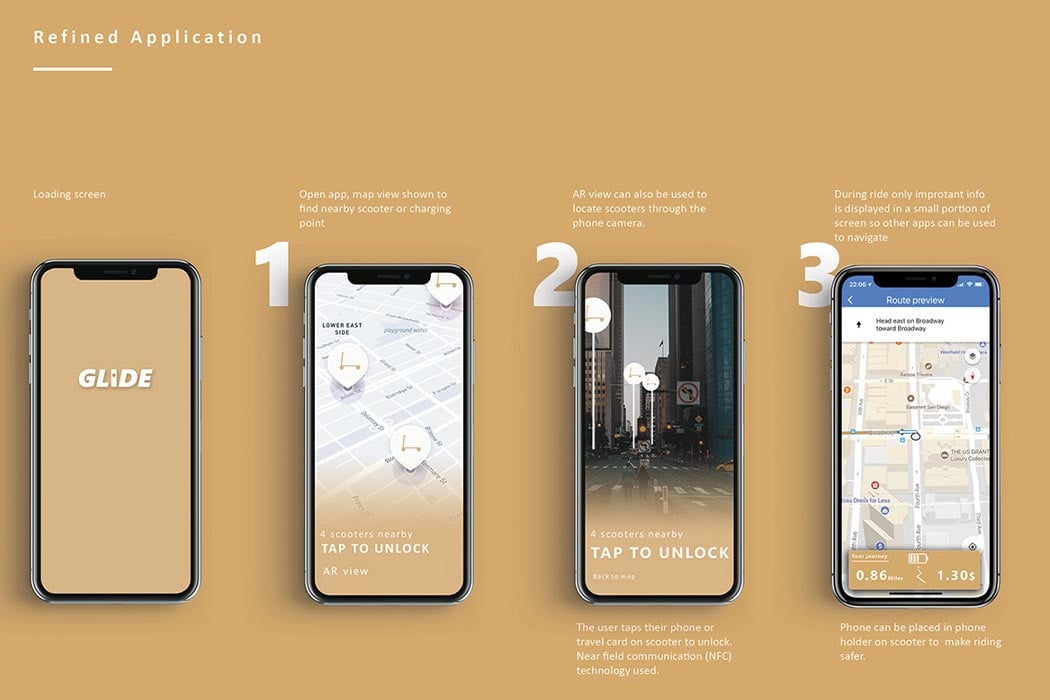
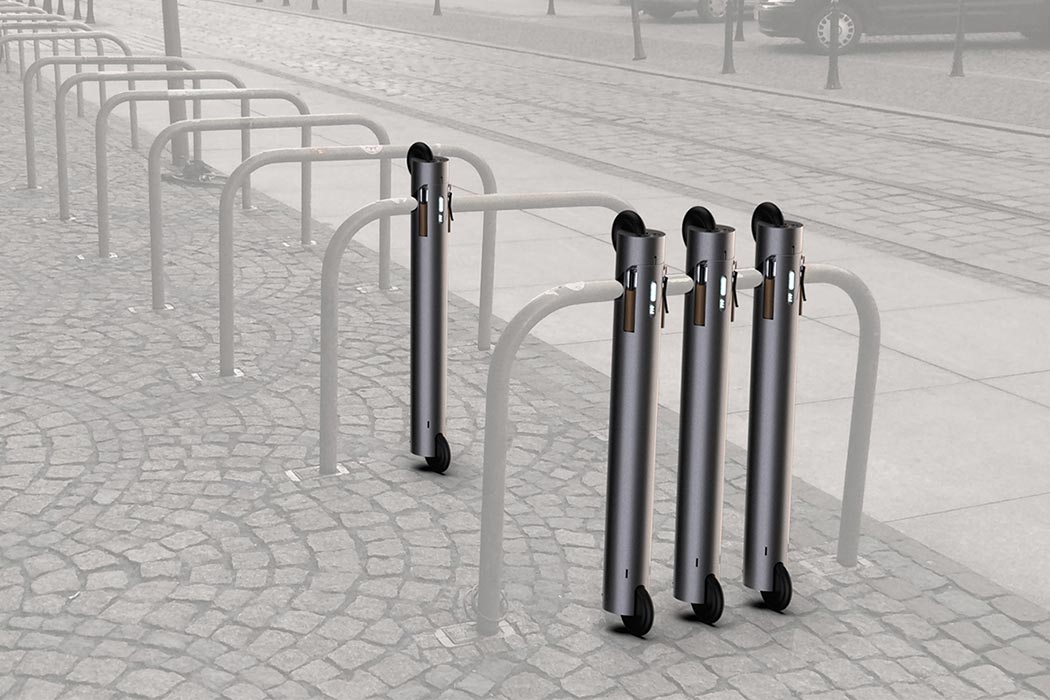
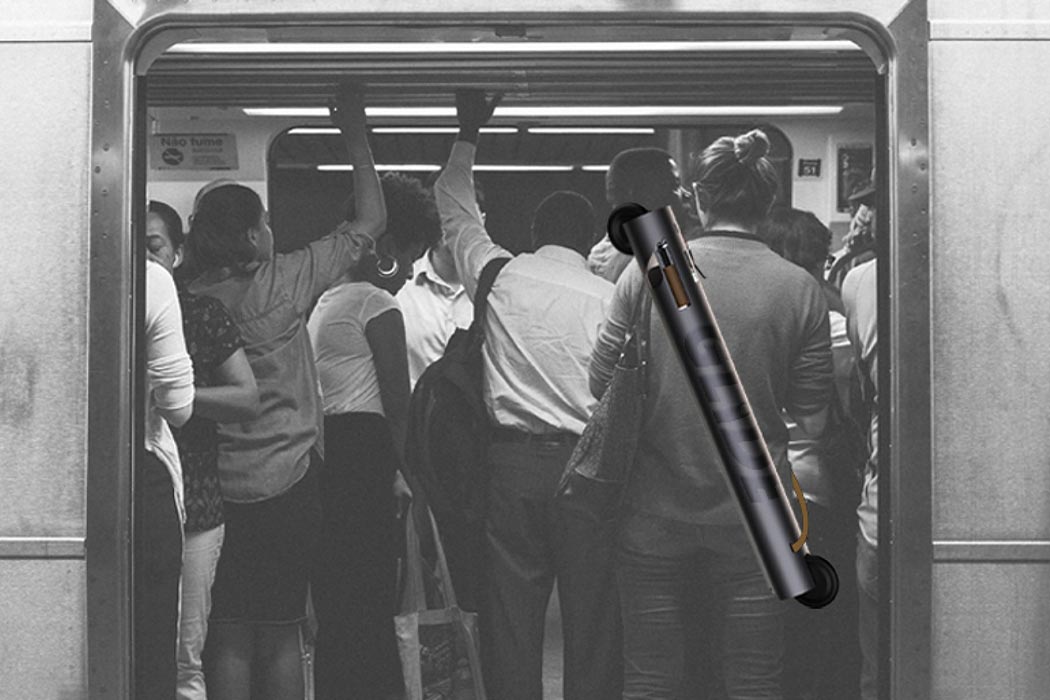
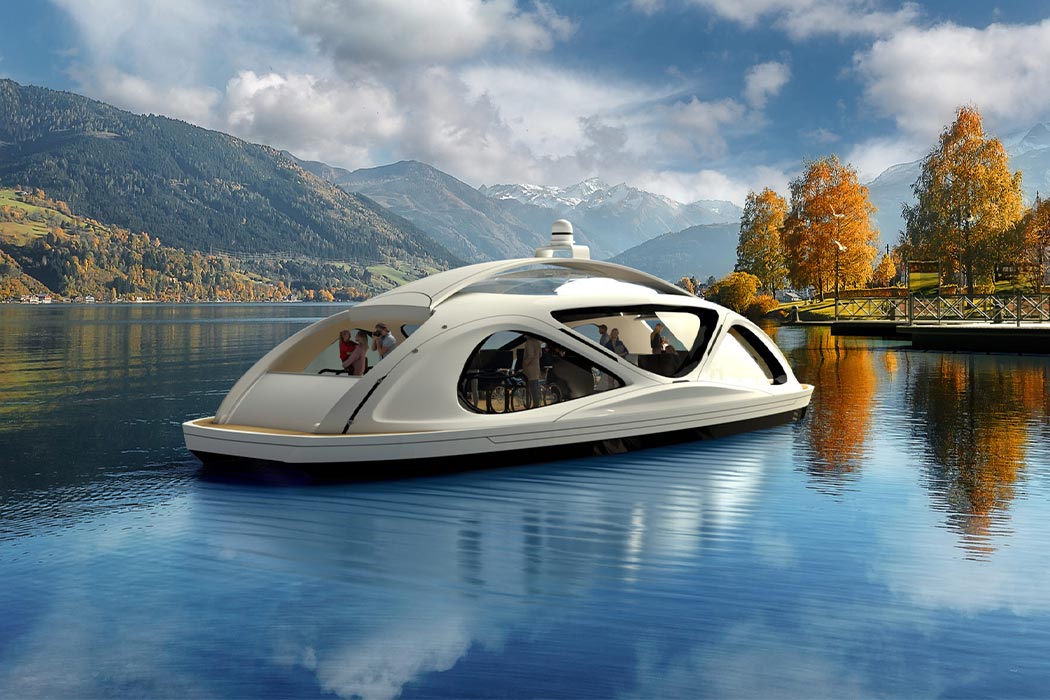
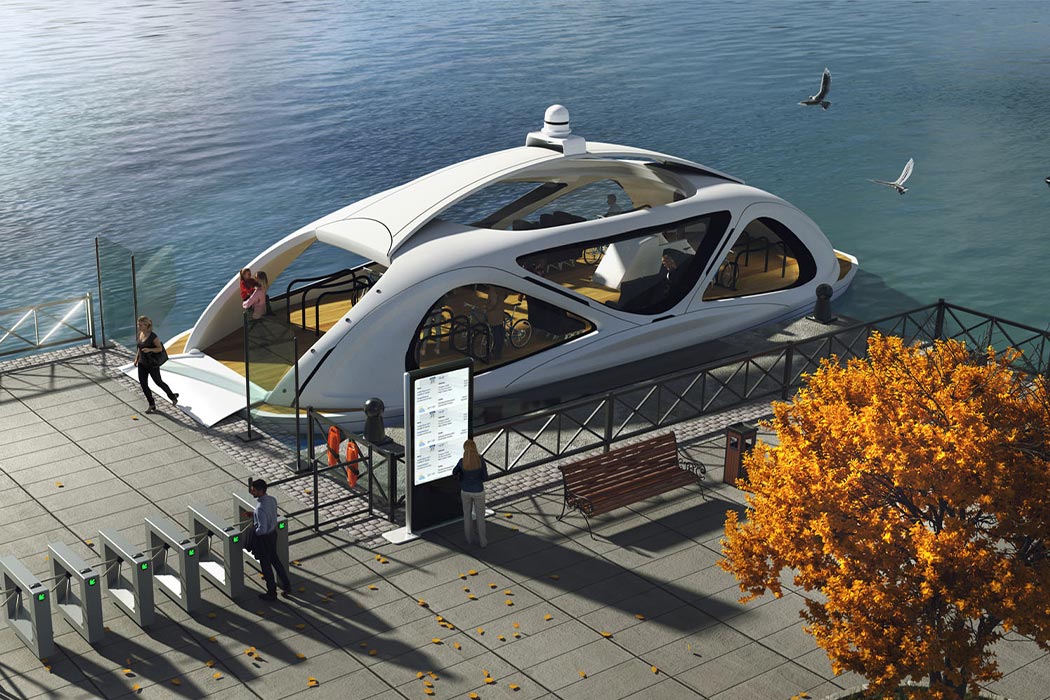
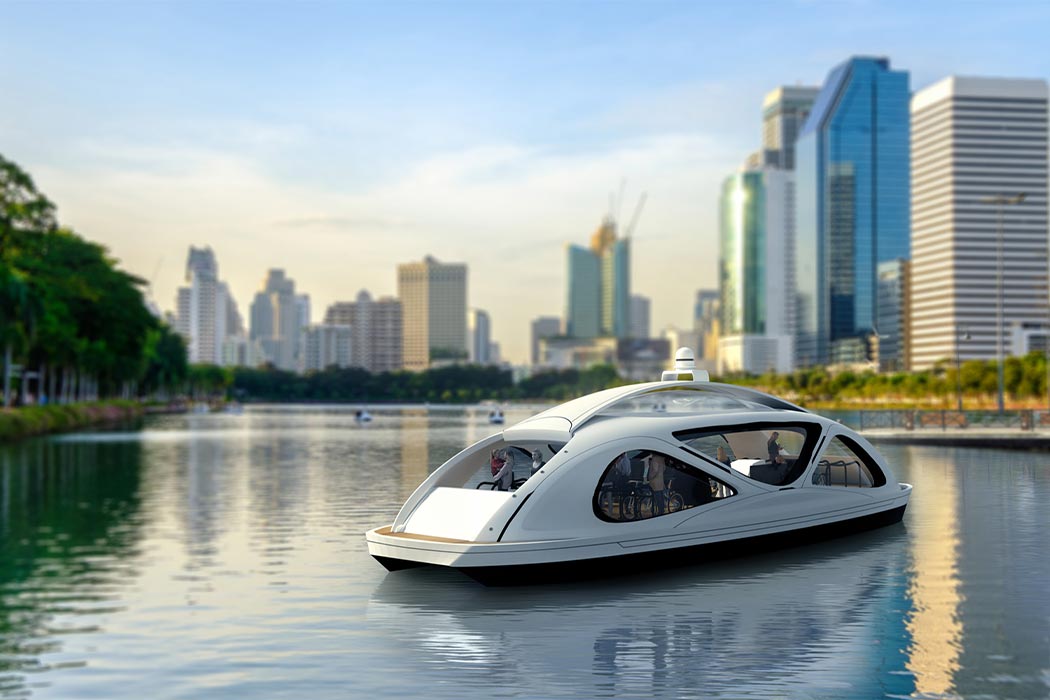
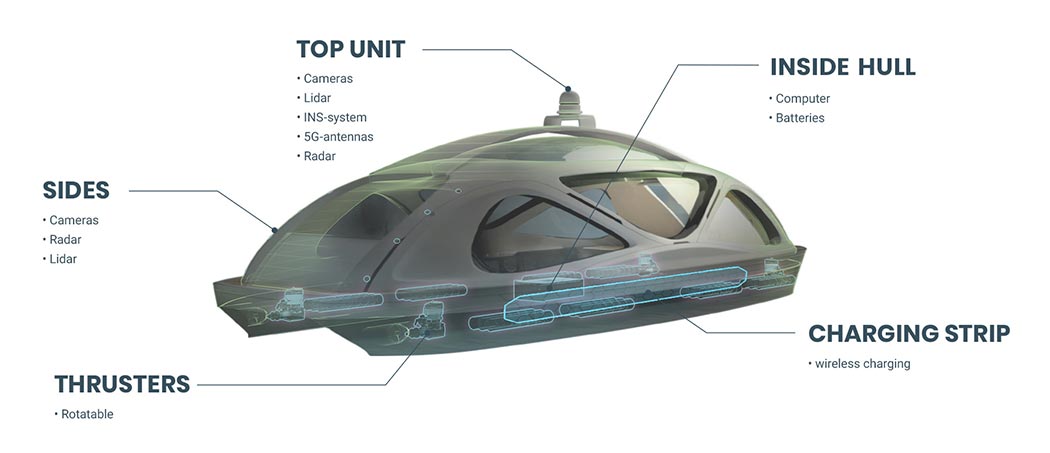
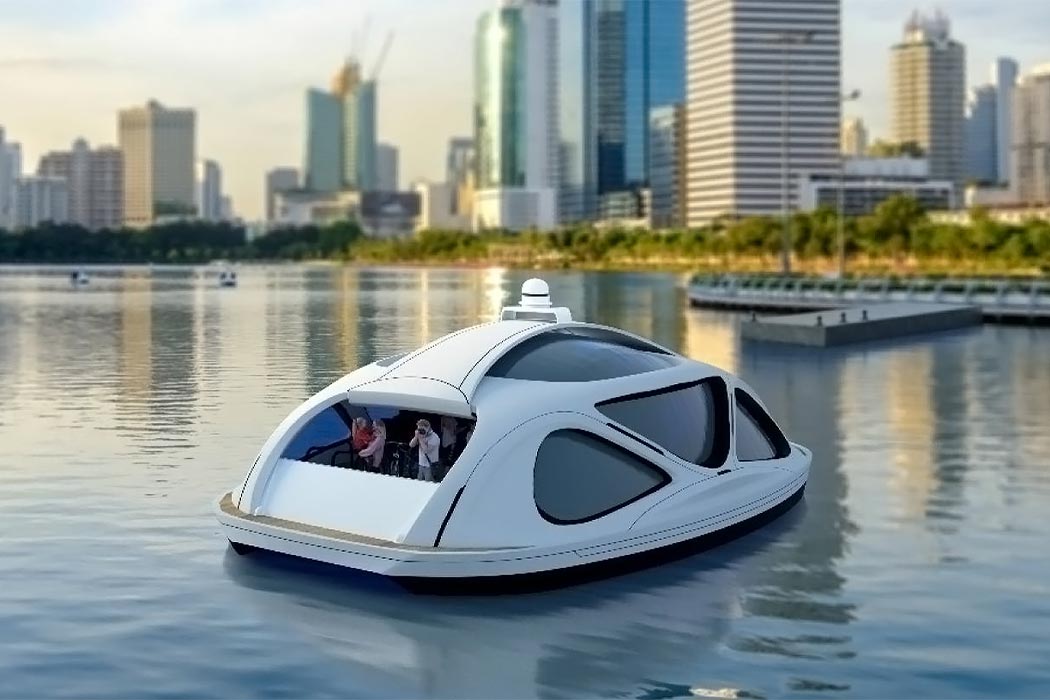

















 Apple took its time getting transit directions onto its maps, and even once it did Apple Maps users in countries outside the US were left wanting. Now, it seems it's finally rolling out transit directions coverage across Europe. According to MacRumor...
Apple took its time getting transit directions onto its maps, and even once it did Apple Maps users in countries outside the US were left wanting. Now, it seems it's finally rolling out transit directions coverage across Europe. According to MacRumor...
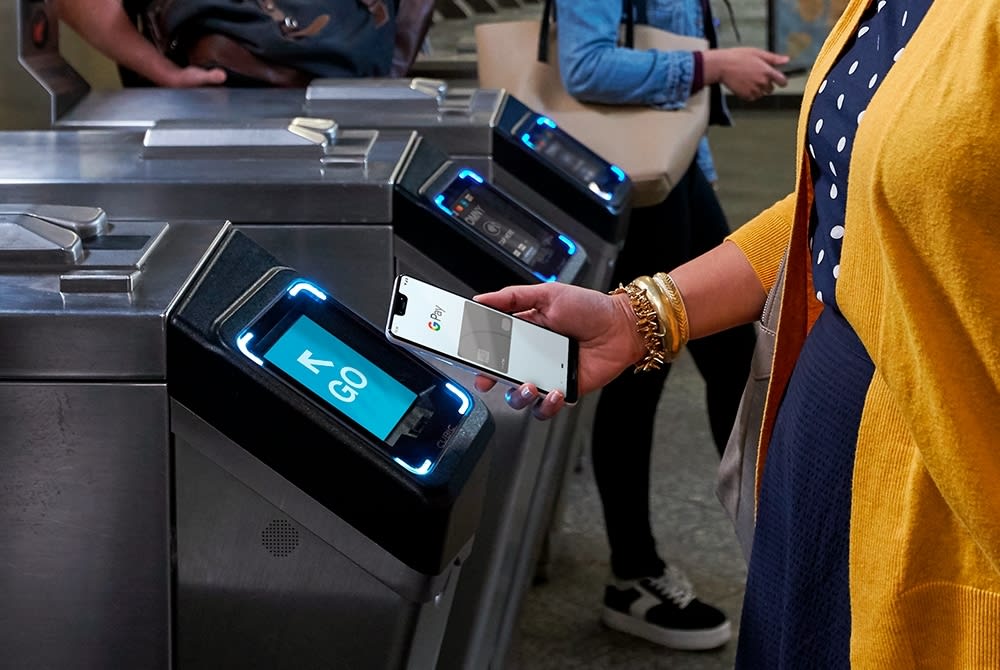 Paying for public transport could be about to become more convenient, with fare payment system Cubic Transportation Systems teaming up with Google to offer contactless transit payments using Google Pay.
Paying for public transport could be about to become more convenient, with fare payment system Cubic Transportation Systems teaming up with Google to offer contactless transit payments using Google Pay.